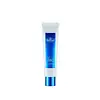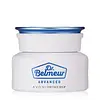What's inside
What's inside
 Key Ingredients
Key Ingredients

 Benefits
Benefits

 Concerns
Concerns

 Ingredients Side-by-side
Ingredients Side-by-side

Water
Skin ConditioningDipropylene Glycol
HumectantGlycerin
HumectantCyclohexasiloxane
EmollientCoco-Caprylate/Caprate
EmollientPanthenol
Skin ConditioningNiacinamide
SmoothingTriethylhexanoin
Masking1,2-Hexanediol
Skin ConditioningGlyceryl Stearate
EmollientCetearyl Alcohol
EmollientC14-22 Alcohols
Emulsion StabilisingHydrogenated Lecithin
EmulsifyingAlanyl Glutamine
HumectantMyristica Fragrans Extract
MaskingPhytosteryl/Octyldodecyl Lauroyl Glutamate
Skin ConditioningCeramide NP
Skin ConditioningDimethicone
EmollientCetearyl Olivate
PEG-100 Stearate
Tocopheryl Acetate
AntioxidantSorbitan Olivate
EmulsifyingSqualane
EmollientPEG-150 Distearate
EmulsifyingDimethicone/Vinyl Dimethicone Crosspolymer
Skin ConditioningAmmonium Acryloyldimethyltaurate/Vp Copolymer
C12-20 Alkyl Glucoside
EmulsifyingMadecassoside
AntioxidantGlycereth-20
HumectantMacadamia Ternifolia Seed Oil
EmollientPEG-10 Rapeseed Sterol
CleansingButyrospermum Parkii Butter
Skin ConditioningArachidyl Glucoside
EmulsifyingXanthan Gum
EmulsifyingTrisodium EDTA
Eclipta Prostrata Extract
Skin ConditioningStearic Acid
CleansingBeta-Glucan
Skin ConditioningCholesterol
EmollientCarbomer
Emulsion StabilisingTromethamine
BufferingHelianthus Annuus Seed Oil
EmollientMelia Azadirachta Leaf Extract
Skin ConditioningAsiaticoside
AntioxidantMadecassic Acid
Skin ConditioningAsiatic Acid
Skin ConditioningMoringa Oleifera Seed Oil
EmollientSodium Lauroyl Lactylate
EmulsifyingDaucus Carota Sativa Seed Oil
EmollientDaucus Carota Sativa Root Extract
Skin ConditioningBeta-Carotene
Skin ConditioningCeramide AP
Skin ConditioningPhytosphingosine
Skin ConditioningEthylhexylglycerin
Skin ConditioningAscorbyl Palmitate
AntioxidantCeramide EOP
Skin ConditioningCaprylic/Capric Triglyceride
MaskingCinnamomum Camphora Bark Oil
MaskingLitsea Cubeba Fruit Oil
MaskingOriganum Majorana Leaf Oil
MaskingCymbopogon Martini Oil
MaskingCitrus Aurantium Dulcis Flower Oil
AstringentCitrus Aurantium Bergamia Fruit Oil
MaskingWater, Dipropylene Glycol, Glycerin, Cyclohexasiloxane, Coco-Caprylate/Caprate, Panthenol, Niacinamide, Triethylhexanoin, 1,2-Hexanediol, Glyceryl Stearate, Cetearyl Alcohol, C14-22 Alcohols, Hydrogenated Lecithin, Alanyl Glutamine, Myristica Fragrans Extract, Phytosteryl/Octyldodecyl Lauroyl Glutamate, Ceramide NP, Dimethicone, Cetearyl Olivate, PEG-100 Stearate, Tocopheryl Acetate, Sorbitan Olivate, Squalane, PEG-150 Distearate, Dimethicone/Vinyl Dimethicone Crosspolymer, Ammonium Acryloyldimethyltaurate/Vp Copolymer, C12-20 Alkyl Glucoside, Madecassoside, Glycereth-20, Macadamia Ternifolia Seed Oil, PEG-10 Rapeseed Sterol, Butyrospermum Parkii Butter, Arachidyl Glucoside, Xanthan Gum, Trisodium EDTA, Eclipta Prostrata Extract, Stearic Acid, Beta-Glucan, Cholesterol, Carbomer, Tromethamine, Helianthus Annuus Seed Oil, Melia Azadirachta Leaf Extract, Asiaticoside, Madecassic Acid, Asiatic Acid, Moringa Oleifera Seed Oil, Sodium Lauroyl Lactylate, Daucus Carota Sativa Seed Oil, Daucus Carota Sativa Root Extract, Beta-Carotene, Ceramide AP, Phytosphingosine, Ethylhexylglycerin, Ascorbyl Palmitate, Ceramide EOP, Caprylic/Capric Triglyceride, Cinnamomum Camphora Bark Oil, Litsea Cubeba Fruit Oil, Origanum Majorana Leaf Oil, Cymbopogon Martini Oil, Citrus Aurantium Dulcis Flower Oil, Citrus Aurantium Bergamia Fruit Oil
Water
Skin ConditioningGlycerin
HumectantCyclohexasiloxane
EmollientPropanediol
SolventPolyglyceryl-4 Caprate
Emulsifying1,2-Hexanediol
Skin ConditioningHydrogenated Polydecene
EmollientCetyl Palmitate
EmollientHydrogenated Olive Oil Stearyl Esters
Emulsion StabilisingCaprylic/Capric Triglyceride
MaskingSorbitan Stearate
EmulsifyingPanthenol
Skin ConditioningMadecassoside
AntioxidantSodium Hyaluronate
HumectantHydrolyzed Hyaluronic Acid
HumectantCentella Asiatica Leaf Extract
Skin ConditioningBeta-Glucan
Skin ConditioningAcrylates/C10-30 Alkyl Acrylate Crosspolymer
Emulsion StabilisingIsohexadecane
EmollientSqualane
EmollientTridecyl Stearate
EmollientButylene Glycol
HumectantTridecyl Trimellitate
EmollientHydrogenated Vegetable Oil
EmollientJojoba Esters
EmollientAmmonium Acryloyldimethyltaurate/Vp Copolymer
Polyglyceryl-10 Stearate
Skin ConditioningTromethamine
BufferingDipentaerythrityl Hexacaprylate/Hexacaprate
EmulsifyingHydrogenated Olive Oil Unsaponifiables
EmollientTrisodium EDTA
Tocopherol
AntioxidantCinnamomum Camphora Bark Oil
MaskingLitsea Cubeba Fruit Oil
MaskingCitrus Aurantium Bergamia Fruit Oil
MaskingOriganum Majorana Leaf Oil
MaskingCymbopogon Martini Oil
MaskingCitrus Aurantium Dulcis Flower Oil
AstringentCitral
PerfumingLimonene
PerfumingLinalool
PerfumingWater, Glycerin, Cyclohexasiloxane, Propanediol, Polyglyceryl-4 Caprate, 1,2-Hexanediol, Hydrogenated Polydecene, Cetyl Palmitate, Hydrogenated Olive Oil Stearyl Esters, Caprylic/Capric Triglyceride, Sorbitan Stearate, Panthenol, Madecassoside, Sodium Hyaluronate, Hydrolyzed Hyaluronic Acid, Centella Asiatica Leaf Extract, Beta-Glucan, Acrylates/C10-30 Alkyl Acrylate Crosspolymer, Isohexadecane, Squalane, Tridecyl Stearate, Butylene Glycol, Tridecyl Trimellitate, Hydrogenated Vegetable Oil, Jojoba Esters, Ammonium Acryloyldimethyltaurate/Vp Copolymer, Polyglyceryl-10 Stearate, Tromethamine, Dipentaerythrityl Hexacaprylate/Hexacaprate, Hydrogenated Olive Oil Unsaponifiables, Trisodium EDTA, Tocopherol, Cinnamomum Camphora Bark Oil, Litsea Cubeba Fruit Oil, Citrus Aurantium Bergamia Fruit Oil, Origanum Majorana Leaf Oil, Cymbopogon Martini Oil, Citrus Aurantium Dulcis Flower Oil, Citral, Limonene, Linalool
Ingredients Explained
These ingredients are found in both products.
Ingredients higher up in an ingredient list are typically present in a larger amount.
1,2-Hexanediol is a synthetic liquid and another multi-functional powerhouse.
It is a:
- Humectant, drawing moisture into the skin
- Emollient, helping to soften skin
- Solvent, dispersing and stabilizing formulas
- Preservative booster, enhancing the antimicrobial activity of other preservatives
Ammonium Acryloyldimethyltaurate/Vp Copolymer (let's call it AAVC for short) is a synthetically created polymer. It's used as a film-forming agent and used to thicken the consistency of products.
AAVC is able to increase the consistency and viscosity of products due to its large molecule size. It also prevents ingredients from separating.
Beta-Glucan is a polysaccharide. It can be derived from the cell walls of seaweed, oats, yeast, and fungi. It hydrates the skin and helps boost your skin's natural barrier.
As an antioxidant, beta-glucan helps fight free-radicals. Free-radicals are molecules that may damage your skin cells, such as pollution.
Studies show this ingredient may be an effective wrinkle reducer as it can deeply penetrate into skin. It has also been show to help with wound healing.
Learn more about Beta-GlucanThis ingredient is an emollient, solvent, and texture enhancer. It is considered a skin-softener by helping the skin prevent moisture loss.
It helps thicken a product's formula and makes it easier to spread by dissolving clumping compounds.
Caprylic Triglyceride is made by combining glycerin with coconut oil, forming a clear liquid.
While there is an assumption Caprylic Triglyceride can clog pores due to it being derived from coconut oil, there is no research supporting this.
Learn more about Caprylic/Capric TriglycerideThis oil is created by distilling the wood of the Cinnamomum camphora tree. It contains camphor, a known skin irritant when used in high amounts.
Citrus Aurantium Bergamia Fruit Oil is the oil from the bergamot orange. It is native to Italy.
This ingredient is used to add fragrance to products. It contains limonene, linalool, and linalyl acetate.
The term 'fragrance' is not regulated in many countries. In many cases, it is up to the brand to define this term. For instance, many brands choose to label themselves as "fragrance-free" because they are not using synthetic fragrances. However, their products may still contain ingredients such as essential oils that are considered a fragrance.
When used topically, Citrus Aurantium Bergamia Fruit Oil is a photosensitizer due to its furanocoumarins. Photosensitizers make the skin and eyes much more sensitive to sunlight. Photosensitizers are linked to skin cancer.
However, more cosmetics using Citrus Aurantium Bergamia Fruit Oil are removing the furanocoumarins.
Bergamot oil was also found to have anti-inflammatory, antibacterial and antifungal properties.
Learn more about Citrus Aurantium Bergamia Fruit OilCitrus Aurantium Dulcis Flower Oil is an oil.
Cyclohexasiloxane is a type of silicone more commonly known as D6. It is an emollient and solvent.
Cyclohexasiloxane is used to evenly distribute ingredients throughout the product. When applied to the skin, Cyclohexasiloxane evaporates and leaves behind a silky feel.
As an emollient, it can help the skin feel soft and hydrated. It is also used to reduce frizz in hair products.
Learn more about CyclohexasiloxaneCymbopogon Martini Oil is the volatile oil expressed from the herb palmarosa, Cymbopogon martini, Gramineae
Glycerin is already naturally found in your skin. It helps moisturize and protect your skin.
A study from 2016 found glycerin to be more effective as a humectant than AHAs and hyaluronic acid.
As a humectant, it helps the skin stay hydrated by pulling moisture to your skin. The low molecular weight of glycerin allows it to pull moisture into the deeper layers of your skin.
Hydrated skin improves your skin barrier; Your skin barrier helps protect against irritants and bacteria.
Glycerin has also been found to have antimicrobial and antiviral properties. Due to these properties, glycerin is often used in wound and burn treatments.
In cosmetics, glycerin is usually derived from plants such as soybean or palm. However, it can also be sourced from animals, such as tallow or animal fat.
This ingredient is organic, colorless, odorless, and non-toxic.
Glycerin is the name for this ingredient in American English. British English uses Glycerol/Glycerine.
Learn more about GlycerinLitsea Cubeba Fruit Oil is a fragrance and is an oil.
Madecassoside comes from the super popular skin-soothing ingredient, Centella asiatica. It is one of four active compounds found in the extract of Centella Asiatica.
Madecassoside has antioxidant, anti-inflammatory, and hydrating properties. It contains fatty acids, amino acids, beta-carotene, and phytochemicals.
One study found using Madecassoside with ascorbic acid helped reduce the signs of aging and improved skin hydration.
Learn more about MadecassosideOriganum Majorana Leaf Oil is an oil.
Panthenol is a common ingredient that helps hydrate and soothe the skin. It is found naturally in our skin and hair.
There are two forms of panthenol: D and L.
D-panthenol is also known as dexpanthenol. Most cosmetics use dexpanthenol or a mixture of D and L-panthenol.
Panthenol is famous due to its ability to go deeper into the skin's layers. Using this ingredient has numerous pros (and no cons):
Like hyaluronic acid, panthenol is a humectant. Humectants are able to bind and hold large amounts of water to keep skin hydrated.
This ingredient works well for wound healing. It works by increasing tissue in the wound and helps close open wounds.
Once oxidized, panthenol converts to pantothenic acid. Panthothenic acid is found in all living cells.
This ingredient is also referred to as pro-vitamin B5.
Learn more about PanthenolSqualane is an emollient that helps the skin hold onto moisture. It's an oily liquid that occurs naturally in certain types of fish and plant oils.
Because squalane boosts hydration in the skin, it also comes with plenty of benefits: it is an antioxidant and can help fight free radicals and skin damage. Squalane is also found to have a detoxifying effect when applied.
Squalane comes from squalene, which occurs naturally within the sebum of our skin. It is one of the oils our skin produces to keep itself hydrated. Squalane is the hydrogenated version of squalene and has a longer shelf life.
Research shows that squalane is non-irritating (even at 100% concentration).
In general, it's a fantastic ingredient. It does a great job at hydrating the skin, and it's suitable for those with sensitive skin.
The source of squalane may impact malassezia / fungal acne. This is because olive oil derived squalane can contain impurities such as fatty acids and plant waxes. Sugarcane derived squalane is recommended for anyone with malassezia concerns.
Is squalane vegan?
This depends on the source. Squalane can be derived from both plants and animals. Most squalane used in skincare comes from plants.
Please note: the source of squalane is only known if disclosed by the brand. We recommend reaching out to the brand if you have any questions about their squalane.
Read more about squalene with an "e".
Is squalane an oil?
Squalane is often called an oil, but it’s technically not; it’s a hydrocarbon, meaning it’s only made of carbon and hydrogen, unlike true oils which are triglycerides made of fatty acids and glycerol.
The term “oil-free” isn’t regulated, so companies can define it however they want. Some exclude all oils, while others just avoid mineral oil or comedogenic oils.
While some people avoid oils thinking they cause breakouts, the right kind of oil (or oil-like ingredient like squalane) can actually help balance and hydrate your skin. It’s worth testing out simple oils or squalane to see what works best for your skin.
Learn more about SqualaneWe don't have a description for Trisodium EDTA yet.
Tromethamine helps balance the pH and improve the texture of a product. It is synthetically created.
As an emulsifier, Tromethamine prevents oil and water ingredients from separating. This helps stabilize the product and elongate a product's shelf life. Tromethamine also makes a product thicker.
Tromethamine helps balance the pH level of a product. Normal pH level of skin is slightly acidic (~4.75-5.5). The acidity of our skin is maintained by our glands and skin biome. Being slightly acidic allows our skin to create an "acid mantle". This acid mantle is a thin barrier that protects our skin from bacteria and contaminants.
Oral Tromethanmine is an anti-inflammatory drug but plays the role of masking, adding fragrance, and/or balancing pH in skincare.
1,3-Propanediol, 2-amino-2-(hydroxymethyl)-
Learn more about TromethamineWater. It's the most common cosmetic ingredient of all. You'll usually see it at the top of ingredient lists, meaning that it makes up the largest part of the product.
So why is it so popular? Water most often acts as a solvent - this means that it helps dissolve other ingredients into the formulation.
You'll also recognize water as that liquid we all need to stay alive. If you see this, drink a glass of water. Stay hydrated!
Learn more about Water